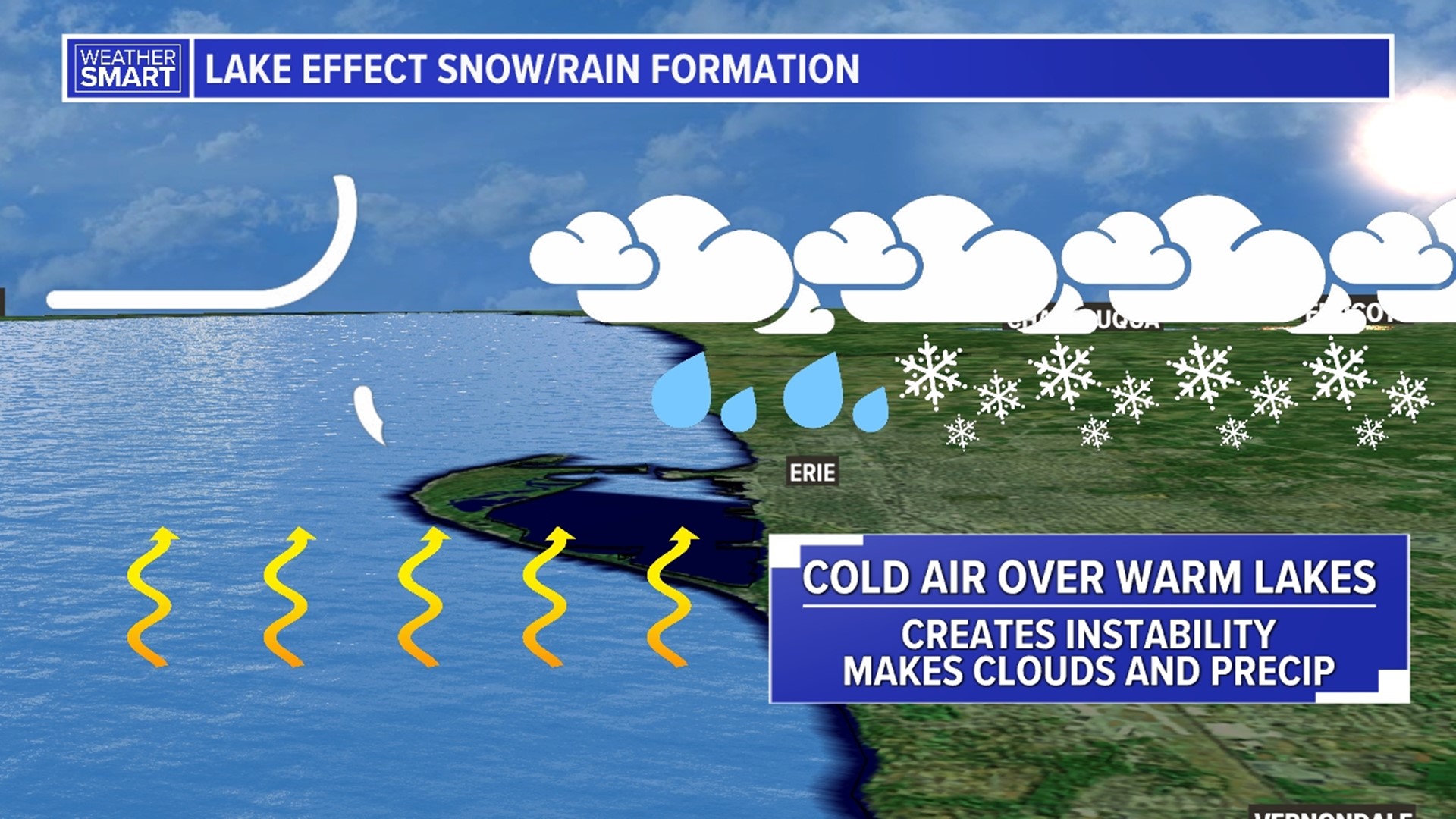MICHIGAN, USA — In this week’s Weather Rewind, we back it up to earlier in the week, when the unseasonably cold blast of fall air turned on the lake effect machines for the first time this season, bringing rain and snow.
Yes, you heard right—accumulating snow—and that was also a first for many along Michigan’s Upper Peninsula.
You might recall a before and after video in Ironwood, Michigan where it went from fall to winter in a flash!
Several inches of snow fell from Monday into early Tuesday morning, and blanketed many other locations along the UP, including Marquette. Six inches of snow were recorded there, along with an unseasonably cold high of 40 degrees.
Pennsylvania also gets lake effect precipitation, and parts of the state got a little taste of it too. Some spots in the northwestern portion of the state saw the first flakes or even snow showers of the season. Amounts ranged from one to two inches in some spots.
Let’s rewind
Pennsylvania is no stranger to snow in the fall.
In fact, lake effect can often help if the weather pattern doesn’t favor traditional snowstorms.
Lake Erie is the primary driver of lake effect precipitation for Pennsylvania folks.
Here’s what happens
It takes time to cool a very large body of water, so the lakes stay “warmer” heading into the fall and winter relative to the “colder” bursts of air that come out of Canada.
When strong winds coming out of Canada bring much colder air over the much warmer lakes, this creates what we call “instability,” where cold air sits over warm air. This forces the warm air to rise.
Rising air leads to clouds and precipitation—in the form of rain, snow, or both depending on the time of year and the weather set up.
Significant snow accumulations stay to the north and west of our area, but when the set up is just right, even we can see some flurries or a light snow accumulation.
And, a fun fact
Lake Erie is the only great lake shallow enough to freeze over when it’s cold enough during the winter, and that can either shut down or limit lake effect near the end of the cold season.
Stay tuned every Friday for the “whys” behind the weather wonders that grab our attention each week.

